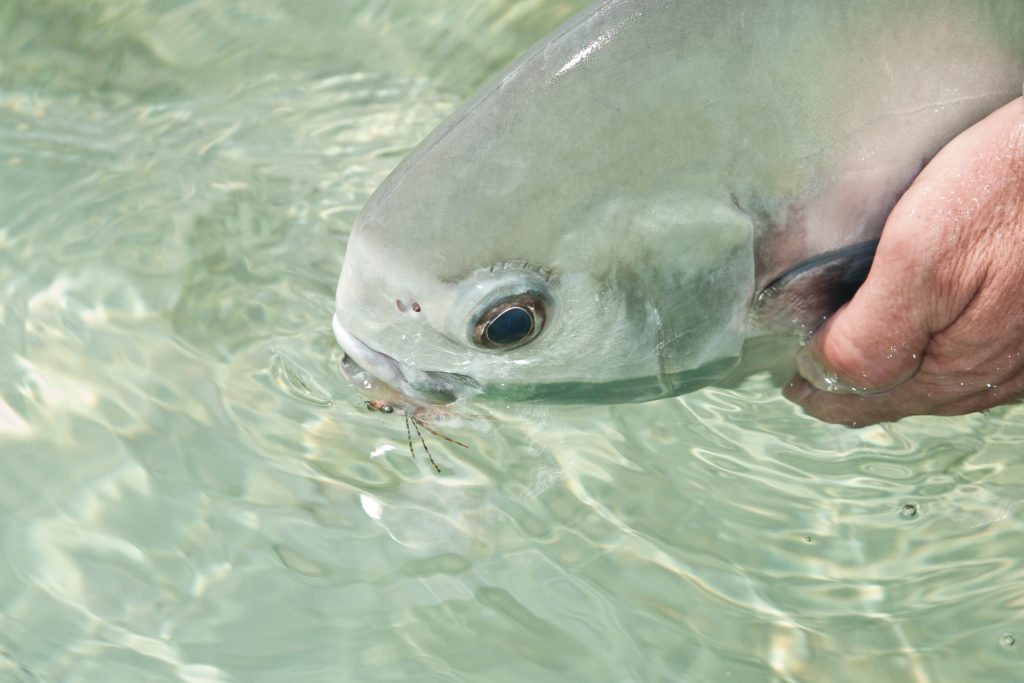Over the last 20 years, BTT research has revealed that any given flats fishery is reliant on habitats or other fish populations outside of the flats in order to remain productive. There are two ways these biological connections can occur: through larval transport via ocean currents and adult migrations. For instance, genetic research and ocean current modeling have shown that bonefish populations in places like Cuba, the Bahamas, Florida, Mexico, and Belize are seeded with larvae that drift in from distant locations. Likewise, tarpon that visit the Florida Keys in the spring spend their summers in places like Virginia where there is an abundance of baitfish. With both fisheries, we must think beyond just conserving the places we love to fish. Additionally, the populations and habitats that occur elsewhere must be protected, for they are inextricably connected to those places we frequent.
In terms of connectivity, permit are no different from the other two species. Distant permit populations are connected through the transport of larvae via ocean currents, and adults migrate off of the flats to deep water habitats in order to spawn. In the Florida Keys, for instance, permit larvae drift in from spawning aggregation sites in the Dry Tortugas, coastal waters in the southeast Gulf of Mexico, and even from more tropical regions including Belize and Mexico. Similar to bonefish, these larval supplies need to be maintained in order for the permit fishery in the Keys to remain robust. Just outside of the Florida Keys, permit harvest is less strictly regulated, providing a potential overfishing scenario that could erode those important larval sources. BTT’s ongoing acoustic tagging program has demonstrated that adult permit on the flats migrate to specific areas of offshore reef promontories to aggregate and spawn. Therefore, the reef habitats that support these aggregations must be healthy, and these offshore aggregations must be addressed with the same conservation ethic they are granted on the flats. As we continue to learn more about permit biology, we can continue to use science to strategically conserve permit and their habitats.
Photo Credit: Dr. Aaron Adams




